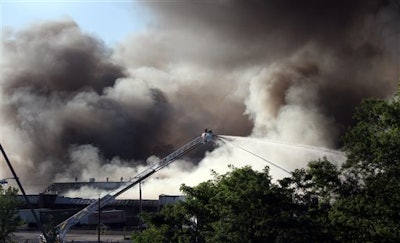
 The old idiom “where there is smoke, there is fire” insinuates that when something looks amiss, real trouble isn’t far behind. But what this timeworn saying fails to convey is that smoke is not just something to be wary of, but is very dangerous in its own right. In my more than 25 years of fire service experience, I have learned all too well that smoke is often a constant, troublesome aspect of every fire; where there is fire, there is always smoke and where there’s smoke, there are usually toxic gases lurking.
The old idiom “where there is smoke, there is fire” insinuates that when something looks amiss, real trouble isn’t far behind. But what this timeworn saying fails to convey is that smoke is not just something to be wary of, but is very dangerous in its own right. In my more than 25 years of fire service experience, I have learned all too well that smoke is often a constant, troublesome aspect of every fire; where there is fire, there is always smoke and where there’s smoke, there are usually toxic gases lurking.
In 2012, U.S. fire departments responded to an estimated 1,375,000 fires, resulting in 2,855 civilian fire fatalities, 83 percent of which were a result of fires in the home. The leading cause of death in a residential fire is not burn injuries, but smoke inhalation. In fact, a 2011 study by the National Fire Protection Association shows an 8-to-1 ratio of smoke inhalation to burns for home fire deaths.
While this may seem surprising, when considering the material that burns in a structure fire — insulation, fiberglass, plastic — the possibility of increased losses due to smoke inhalation doesn’t seem so farfetched. As computers, couches, refrigerators, cleaning supplies and other products burn, toxic gases are released into the air: hydrogen cyanide, vinyl chloride, polyvinyl chloride, formaldehyde, and oxides of nitrogen, to name a few.
In the event of a fire, oxygen levels decrease and the environment can be expected to contain high levels of carbon monoxide and a host of other toxins. As firefighters, we are trained to be on the lookout for carbon monoxide poisoning, noting symptoms including headaches, nausea and drowsiness. Exposure to high levels of carbon monoxide can be fatal, but what is often overlooked is the presence of cyanide. While many associate cyanide with chemical weapons and HazMat scenarios, research has shown that cyanide is a significant contributor to the thousands of deaths related to fire each year. Together, carbon monoxide and cyanide — the “toxic twins” — create a deadly chemical asphyxiant.
In the U.S. there are 12.4 fire deaths per million people each year, which is higher than Germany (6.3), the United Kingdom (7.6), France (9.8), Canada (10.7) and the international average of 10.7. These data highlight the importance of making sure that our fire service men and women have the right resources and training to recognize and treat both carbon monoxide and cyanide poisoning. Education and awareness is the first step towards saving more lives.
While we still do not know cyanide’s exact contribution to fire-related fatalities, we do know it is an important factor. Studies have shown that in fire smoke, hydrogen cyanide can be up to 35 times more toxic than carbon monoxide, a perceived rarity that can cause severe injury or death within minutes. In a review of major fires over a 19-year period, cyanide was found at toxic-to-lethal levels in the blood of approximately 33 percent to 87 percent of fatalities.
Knowing that cyanide is a contributor is important because it is not often discussed as an important factor in fire-related deaths. Smoke inhalation is deadly and complicated, and the better we can understand it, the more lives we can save. I encourage all fire service men and women, as well as the general public, to better educate themselves on smoke inhalation. While determining a diagnosis of cyanide poisoning is a challenge because unlike carbon monoxide there is no readily available test for the presence of cyanide within victims, knowing that cyanide poisoning is a possible outcome of smoke inhalation will hopefully lead to more life-saving awareness. If just one victim, firefighter or civilian can be saved by bringing this dangerous issue to the forefront, then we’ve done our job.
Rob Schnepp is a veteran firefighter with more than 25 years of fire service experience.






















